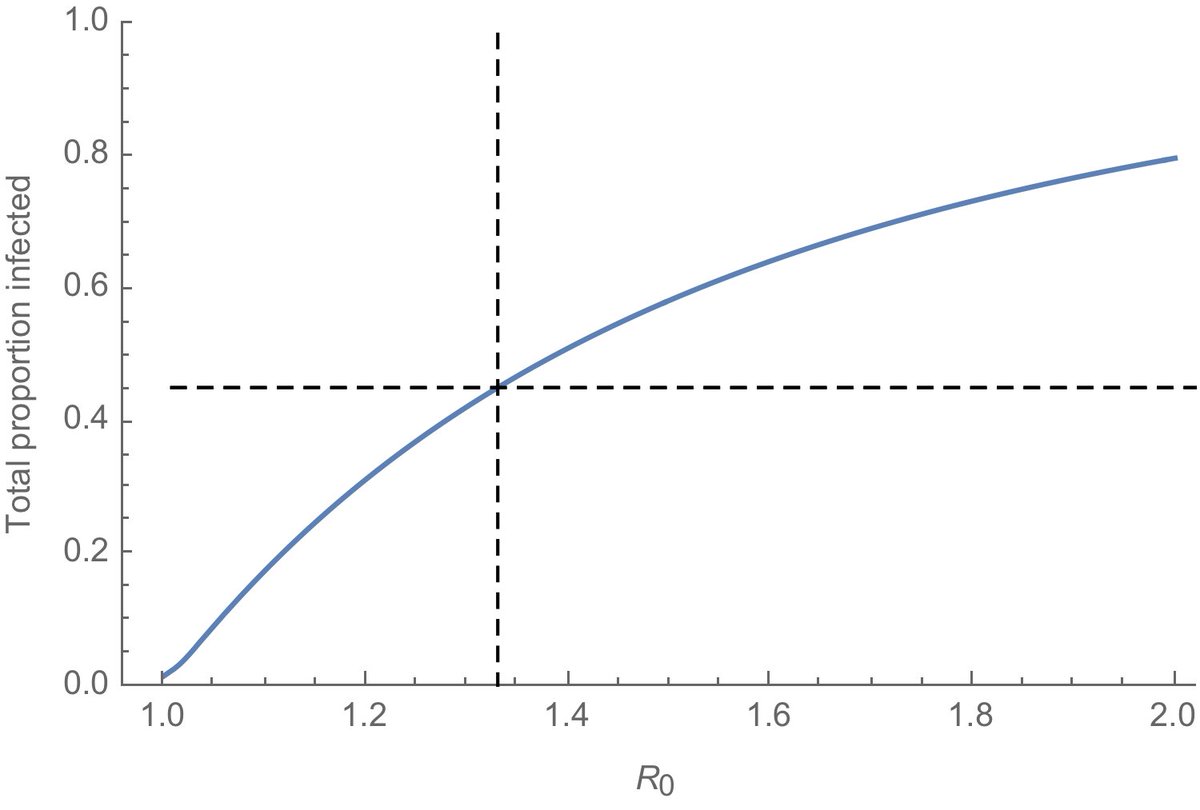Given my statement that the US has 300k - 600k new infections per day, I& #39;ve had a bunch of responses telling me that #TestTraceIsolate is futile and we should give up on it. This thread demonstrates the benefits of reducing transmission even if suppression is not attainable. 1/9
The exact numbers here won& #39;t matter for sake of the argument, but let& #39;s assume that universal mask wearing and sustainable social distancing can bring R0 down to 1.4, but we fail to suppress the epidemic. This would mean an eventual attack rate of 51% or 168M Americans. 2/9
Let& #39;s say we #TestTraceIsolate, but don& #39;t do it well. Let& #39;s assume we catch 1 case in 10 (as we roughly are now) and manage to quarantine 50% of their contacts before they can transmit. This would reduce R0 by 5% to 1.33 and would mean an attack rate of 45% or 148M Americans. 3/9
Just doing #TestTraceIsolate (badly) has reduced the number of total infections by 20M. If we assume (very roughly) that 50% of infections are symptomatic, we& #39;ve reduced symptomatic infections by 10M. 4/9
Bartsch et al estimate $3045 in direct medical costs per symptomatic infection ( https://www.healthaffairs.org/doi/10.1377/hlthaff.2020.00426).">https://www.healthaffairs.org/doi/10.13... These 10M averted symptomatic infections translate into $30 billion in medical costs averted. 5/9
If we assume a fairly conservative IFR of 0.5%, then 20M infections averted translates into 200k deaths averted (in addition to other health and societal benefits from a less intense epidemic). 6/9
So, saving $30B in medical costs and 200k lives would require infrastructure to trace 15M cases and provide support for isolation and quarantine to their contacts. 7/9
I don& #39;t have a good sense for cost of the tracing scale out, but https://www.statnews.com/2020/04/13/coronavirus-health-agencies-need-army-of-contact-tracers/">https://www.statnews.com/2020/04/1... places it at $7.2B for a workforce of 300k people. Hugely expensive, but a net benefit. This is why we should seek digital tools to improve efficiency in manual contact tracing. 8/9
Key metrics for evaluation will be number of cases that have contacts traced as well as the time between symptom onset in the index case and alerting of exposed contacts. 9/9

 Read on Twitter
Read on Twitter



